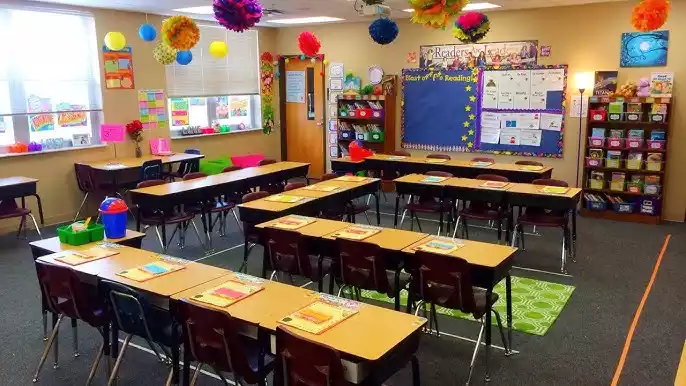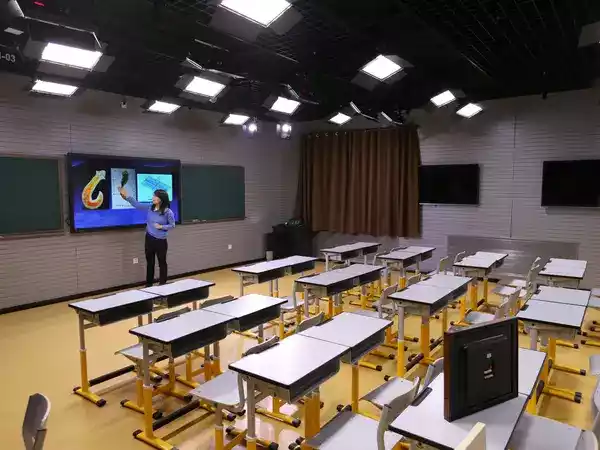In today’s interconnected world, education must evolve to prepare students for the challenges and opportunities of a globalizedsociety.
Traditional teachingmethods, while effective in some areas, often fall short in fostering the skills and perspectives needed to thrive in a diverse and rapidly changing world. Enter Tyler Heinz World Classrooms, an innovative educational initiative that is redefining how students learn, connect, and grow.
This groundbreaking approach combines collaborativlearning, cutting-edge technology, and a culturally rich curriculum to create a truly global classroom experience.
In this article, we’ll explore the vision behind Tyler Heinz World Classrooms, its key features, and the profound impact it is having on students, educators, and communities worldwide. We’ll also discuss how schools can implement this model, address potential challenges, and look ahead to the future of global education.

The Vision Behind Tyler Heinz World Classrooms
The Tyler Heinz World Classrooms initiative was born out of a simple yet powerful idea: education should transcend borders. Tyler Heinz, an educator and advocate for global citizenship, recognized that traditional education systems often focus too narrowly on local or national perspectives. While these systems provide a solid foundation, they rarely prepare students to navigate the complexities of a globalized world.
Heinz envisioned an educational model that would bridge cultural gaps, foster empathy, and equip students with the skills needed to address global challenges. His goal was to create classrooms where students could learn not only from textbooks but also from each other, regardless of where they lived. This vision led to the development of Tyler Heinz World Classrooms, a program that connects students and educators across the globe through collaborative projects, technology, and a curriculum rooted in cultural understanding.
Key Features of Tyler Heinz World Classrooms
What sets Tyler Heinz World Classrooms apart from traditional education models? Here are the four pillars that define this transformative initiative:
1. Collaborative Learning Environments
At the heart of Tyler Heinz World Classrooms is the belief that learning is a social process. Students are encouraged to work together in diverse groups, sharing ideas and perspectives from different cultures. This collaborative approach not only enhances critical thinking and problem-solving skills but also fosters a sense of community and mutual respect.
For example, a classroom in the United States might partner with a school in Japan to work on a joint project about climate change. Through this collaboration, students gain firsthand insights into how different cultures view and address environmental issues.
2. Technology-Enhanced Learning
Technology plays a central role in Tyler Heinz World Classrooms. Digital tools and platforms enable students to connect with peers around the world, participate in virtual exchanges, and access a wealth of online resources. Video conferencing, collaborative software, and interactive learning modules make it possible for students to engage with global issues in real time.
One standout feature is the use of virtual reality (VR) to create immersive learning experiences. Imagine a student in Brazil exploring the Great Wall of China through a VR headset or a class in South Africa virtually visiting a museum in Paris. These experiences bring the world into the classroom, making learning more engaging and impactful.
3. Culturally Relevant Curriculum
A key component of Tyler Heinz World Classrooms is its emphasis on cultural relevance. The curriculum is designed to reflect the diversity of the world, incorporating literature, history, and contemporary issues from various cultures. This approach helps students develop a deeper understanding of global perspectives and challenges.
For instance, a history lesson might explore the impact of colonialism from both European and African viewpoints, encouraging students to think critically about historical narratives. Similarly, a literature class might include works by authors from different regions, exposing students to a wide range of voices and experiences.
4. Emphasis on Global Citizenship
In a world facing pressing challenges like climate change, inequality, and conflict, the need for global citizens has never been greater. Tyler Heinz World Classrooms aims to instill a sense of global responsibility in students, encouraging them to think beyond their immediate surroundings and consider their role in the wider world.
Through projects and discussions on topics like sustainability, human rights, and social justice, students learn to approach problems with empathy and a commitment to action. This focus on global citizenship prepares them to become leaders who can navigate and address the complexities of the 21st century.
The Impact of Tyler Heinz World Classrooms
The Tyler Heinz World Classrooms initiative is making waves in the world of education, with measurable benefits for students, educators, and communities. Here are some of the key impacts:
Bridging Cultural Gaps
One of the most significant achievements of Tyler Heinz World Classrooms is its ability to bring people together across cultural divides. By fostering connections between students from different backgrounds, the initiative promotes mutual understanding and respect. This exchange of ideas and experiences helps break down stereotypes and build bridges of empathy.
Preparing Future Leaders
The skills and perspectives gained through Tyler Heinz World Classrooms are invaluable for future leaders. Students learn to communicate effectively, think critically, and collaborate with others—skills that are essential in today’s interconnected world. Many graduates of the program go on to pursue careers in international relations, education, and social entrepreneurship, where they continue to make a positive impact.
Enhancing Educational Outcomes
Research shows that students who participate in global education initiatives like Tyler Heinz World Classrooms perform better academically. The interactive and engaging nature of the program helps students retain information more effectively and develop a lifelong love of learning. Additionally, the emphasis on critical thinking and problem-solving prepares students for success in higher education and beyond.
Implementing Tyler Heinz World Classrooms in Schools
While the benefits of Tyler Heinz World Classrooms are clear, implementing the program requires careful planning and collaboration. Here are some best practices for educators and schools:
Best Practices for Educators
- Design an Inclusive Curriculum: Incorporate materials and activities that reflect diverse cultures and perspectives.
- Leverage Technology: Use digital tools to connect with classrooms around the world and create interactive learning experiences.
- Encourage Student Voice: Give students opportunities to share their thoughts and experiences, fostering a culture of respect and collaboration.
- Assess Global Competence: Regularly evaluate students’ understanding of global issues and their ability to engage with diverse cultures.

Involving the Community
Engaging the wider community is crucial for the success of Tyler Heinz World Classrooms. Schools can partner with local organizations, cultural institutions, and other educational entities to create opportunities for students to interact with diverse populations. This collaborative approach helps build a community-wide commitment to global education.
Success Stories and Real-World Applications
The impact of Tyler Heinz World Classrooms can be seen in schools and communities around the world. For example, a high school in Canada partnered with a school in Kenya to create a joint project on sustainable agriculture. Students from both countries shared knowledge and ideas, resulting in innovative solutions that were implemented in their local communities.
Another success story comes from a middle school in India that used the Tyler Heinz World Classrooms model to teach students about global citizenship. Through virtual exchanges with schools in Europe and South America, students gained a deeper understanding of cultural diversity and developed a strong sense of global responsibility.
Challenges and Solutions
While Tyler Heinz World Classrooms offers numerous benefits, it is not without its challenges. Some schools may struggle with limited resources, technological barriers, or resistance to change. However, these obstacles can be overcome with the right strategies:
- Securing Funding: Schools can seek grants, partnerships, and community support to fund the program.
- Providing Training: Educators should receive training on how to effectively use technology and implement the curriculum.
- Building Buy-In: Engaging parents, administrators, and the community can help build support for the initiative.
The Future of Tyler Heinz World Classrooms
As the world continues to change, the need for global education will only grow. Tyler Heinz World Classrooms is poised to play a leading role in shaping the future of education, empowering students to become informed, empathetic, and proactive global citizens. By expanding its reach and adapting to new challenges, the initiative has the potential to transform education on a global scale.
Conclusion
Tyler Heinz World Classrooms represents a bold and innovative approach to education, one that prepares students to thrive in a complex and interconnected world. By fostering collaboration, leveraging technology, and emphasizing cultural understanding, this initiative is helping to create a new generation of global citizens. Educators, administrators, and communities have a unique opportunity to embrace this model and revolutionize the way we teach and learn.
In a world that often feels divided, Tyler Heinz World Classrooms offers a hopeful vision of education as a force for unity and positive change. By connecting students across borders and cultures, we can build a brighter, more inclusive future for all.





